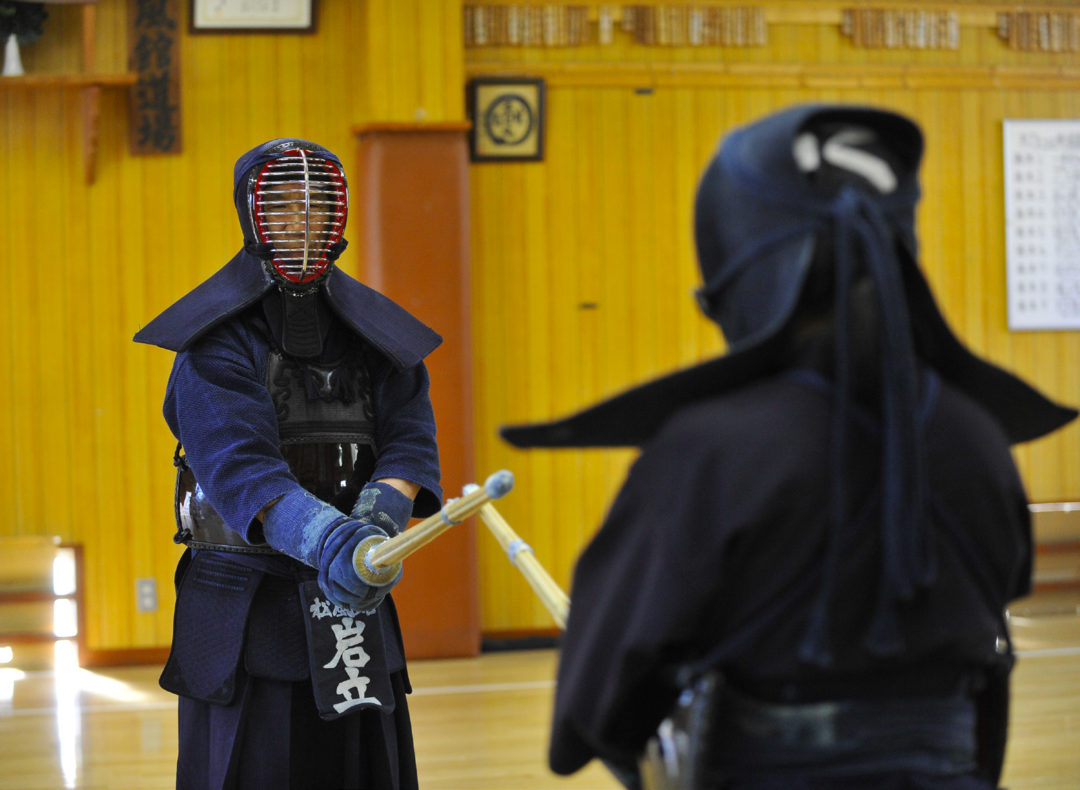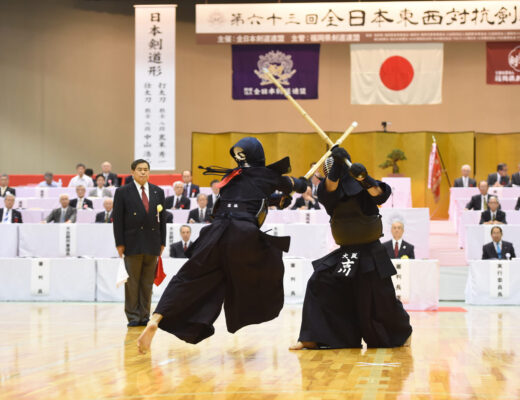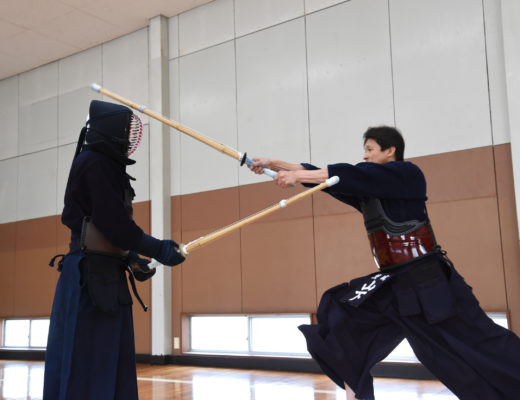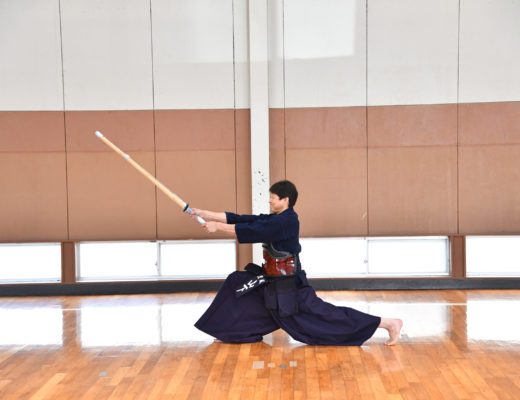Shiai and Referee Rules Article 12:
Are you doing Keiko while understanding the conditions of Yuko Datotsu (valid strikes)?
Profile
Iwatate Saburo, 8th dan Hanshi
Born in 1939 in Chiba Prefecture. After graduating from Chiba Prefecture Narita High School, he got a job at Chiba Prefecture Police. After retiring from the Tokuren, Iwatate sensei served as a Kanto District Police School Instructor and Chiba Prefectural Police kendo head teacher. Starting in 1978, Iwatate began teaching at the Shofukan Dojo and a number of swordsmen from Japan as well as overseas have gathered to ask for the guidance of Iwatate Saburo.
Currently, he is the director of Shofukan, Shobi Gakuen University kendo head teacher, the All-Japan Kendo Federation councilor, All Japan Kendo Federation vice-president and the All Japan Senior-Kenyukai chairman.
Are you doing Keiko in search of Kikentai-Icchi?
In Kendo Shiai you confront your opponent, apply mutual Seme during a clash of Shinai and compete for Yuko Datotsu. In a fast-paced battle, we are fighting in search for effective strikes.
Regarding Yuko Datotsu, Article 12 of the Kendo Shiai and Referee Rules states, “A Yuko Datotsu has a fulfilled spirit and proper posture, strikes the target area with the accurate part of the Shinai with the correct blade angle and has Zanshin.” An accurate strike that leads to Yuko Datotsu requires Kikentai-Icchi, and I believe everyone knows that merely touching the target area is not among the criteria. Elements that lead to Yuko Datotsu include posture, spirit, Maai, body movement, opportunity and Tenouchi. Requirements include the striking area, correct part of the Shinai, blade angle, strength and snapiness. It is important to keep the conditions of Yuko Datotsu in mind during your regular Keiko.
In particular, it is said that it is difficult to pass in examination without a perfect Ippon that seizes the opportunity. This is not a technique that might raise flags in a Shiai, but an Ippon that convinces everyone. It is an Ippon that convinces the person who has been struck from the bottom of his heart. The only way to learn such a technique is to do a lot of Keiko. When doing so, the conditions of the Yuko Datotsu are important.
I think that for adults in particular, Jigeiko accounts for more than half of the training time. If you practice with just the criteria of touching or not touching, you won’t be able to strike a satisfactory Ippon, which is valued in examination.
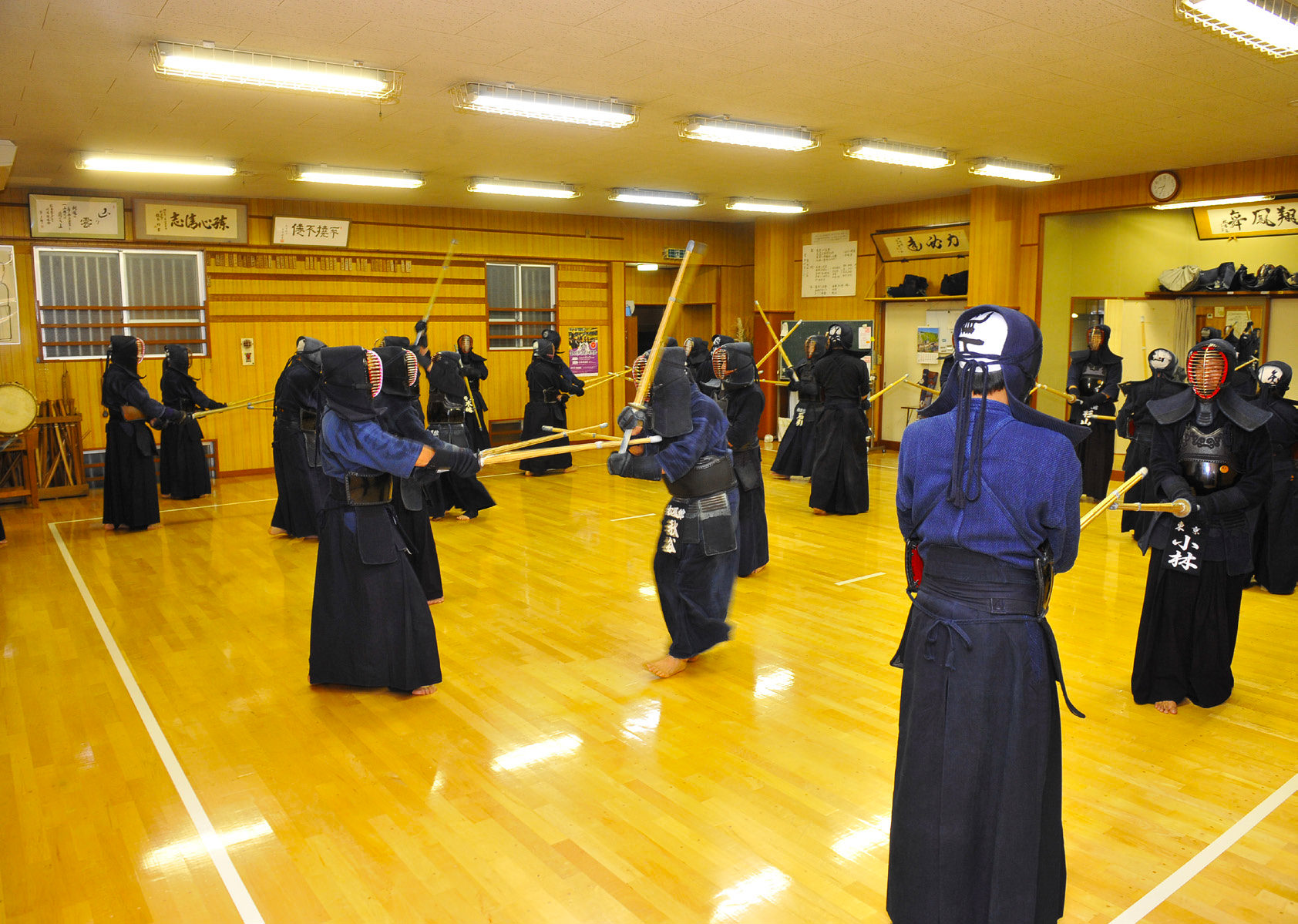
It is important to understand the conditions for Yuko Datotsu and always practice in search of strikes that are consistent with Kikentai-Icchi
Techniques are a way to check your progress. They are a means of seeking the way, so you have to study them a lot and I believe that it will lead to lifelong Kendo. Furthermore, those techniques are judged according to the conditions for Yuko Datotsu.
In Kendo, the ideal is to perform techniques without hesitation when the opportunity is right. However, the feeling of wanting to strike and not getting struck will always arise, making your hands float and widening your feet more than necessary. I also reflect upon myself in these things and I think that Kendo is to control those feelings and practice in search for the ideal strike.
I teach that “the better you are at getting struck, the faster you improve”, but I can’t do it very well myself. Realising that “where you can strike, you can get struck”, we should mutually strife for Ippons that are recognised by both opponents.
When the left hand is set correctly, you can strike the ideal Ippon
Yuko Datotsu come from the correct Kamae. If your Kamae isn’t set up properly, you are only touching the target no matter how often you strike. So how do you get the right Kamae? The left hand is important. It is important in Kendo to set up your left hand properly, as it is often taught that you should “consider yourself lost once your left hand moves.” Open your chest with your shoulder blades pulled back, and keep your neck and the collar of your Keikogi in close contact to maintain your maximum length. If you grip the Shinai with strength in the little finger, ring finger and middle finger respectively, you will get the correct grip called “Uchite”.
Mutual Seme with your opponent is always accompanied by moving your body and it is important you do not change the position of your left hand when doing so. If the position of the left hand changes, your striking motion will be affected and by extending your elbow you will present your opponent with a striking opportunity. The battle is about the center and it is important that you do this subtly by the width of a Shinai without making any unnecessary movements. Sometimes, we use Harai- or Maki-techniques, but if you apply this too much, you will present your opponent with opportunities.
Maintain the position of your left hand as much as possible, and be prepared to perform the ideal Ippon when you feel it is an opportunity. The position of the left hand changes when you block and defend the opponent’s Shinai. This could be good if you can turn it into Oji-Waza straight away, but when your hands are raised too high it becomes a pure defense. Be careful as you can’t perform techniques from such a state.
The rest of this article is only available for Kendo Jidai International subscribers!

